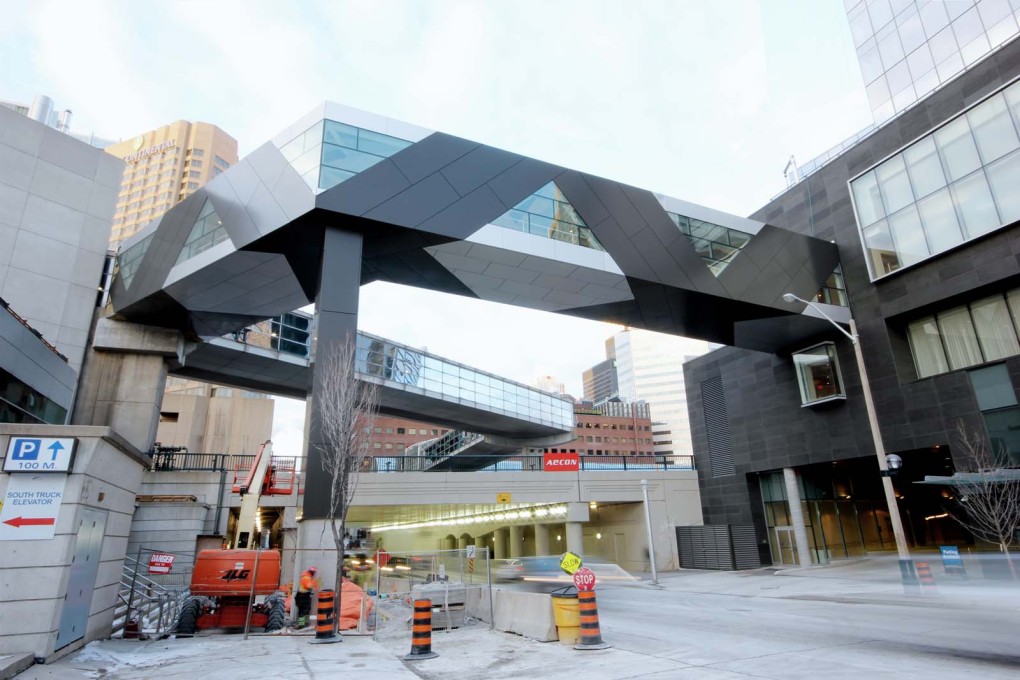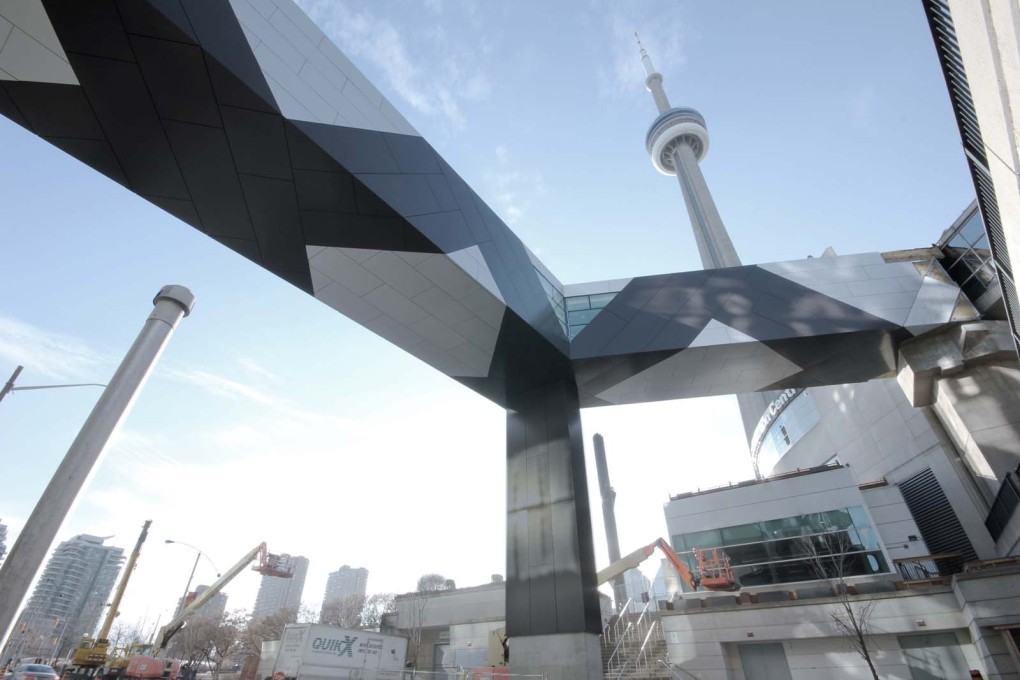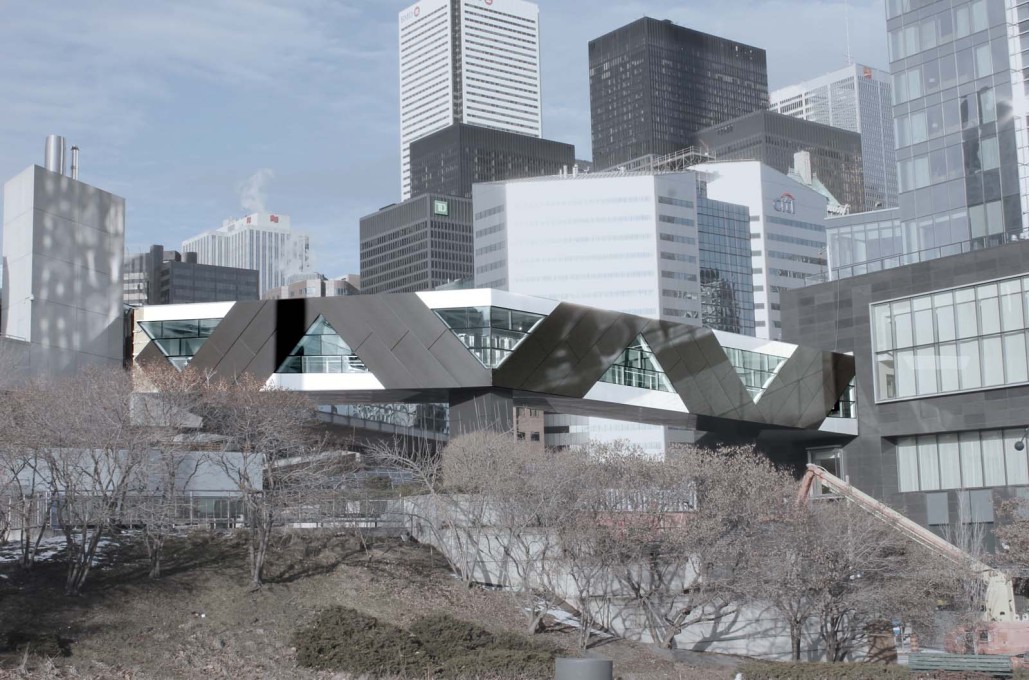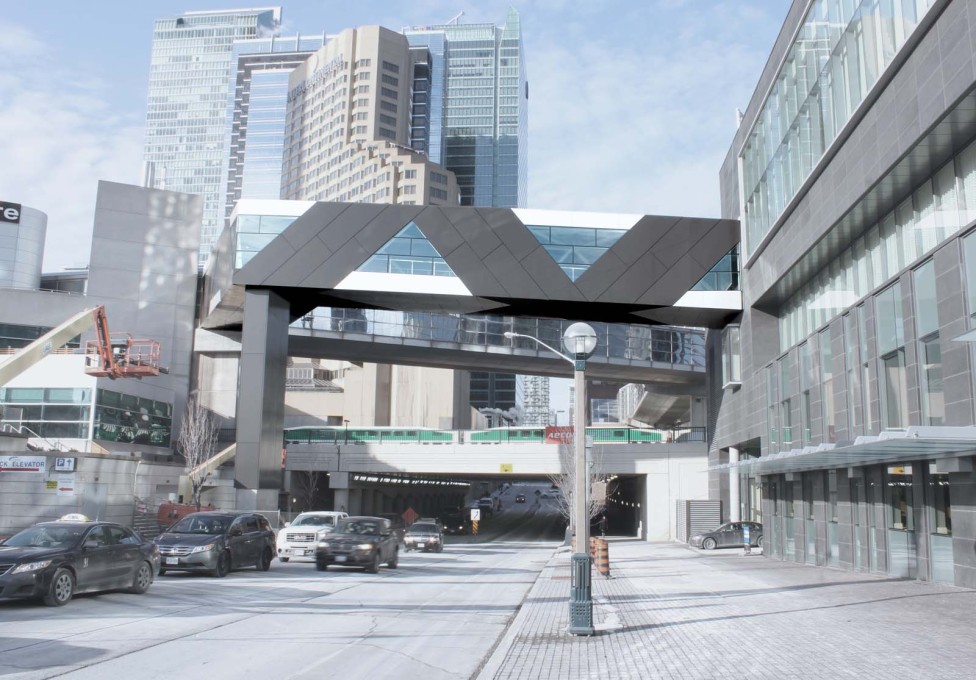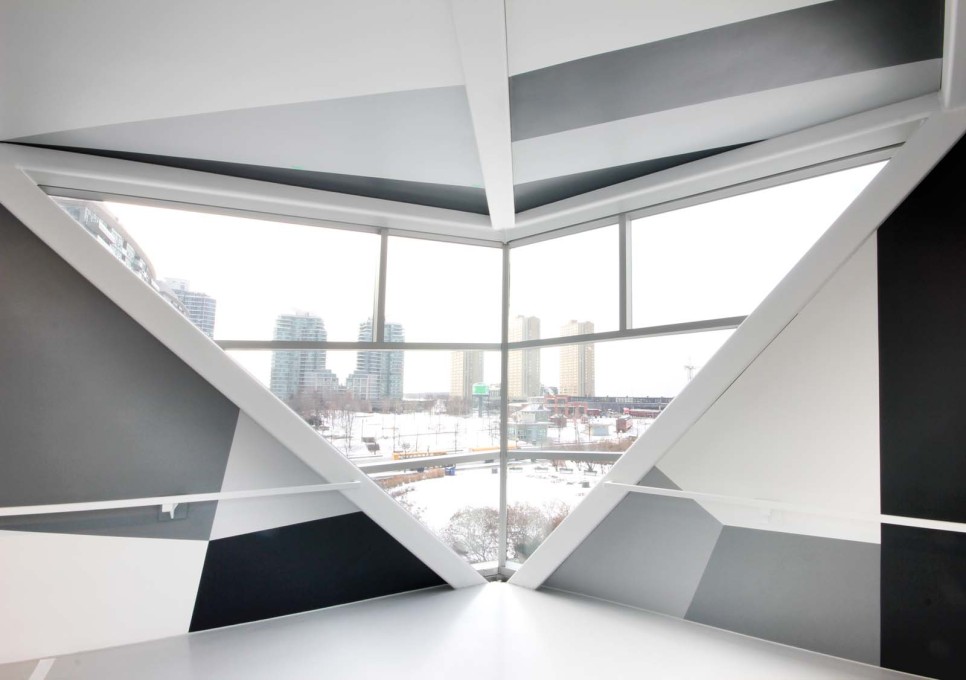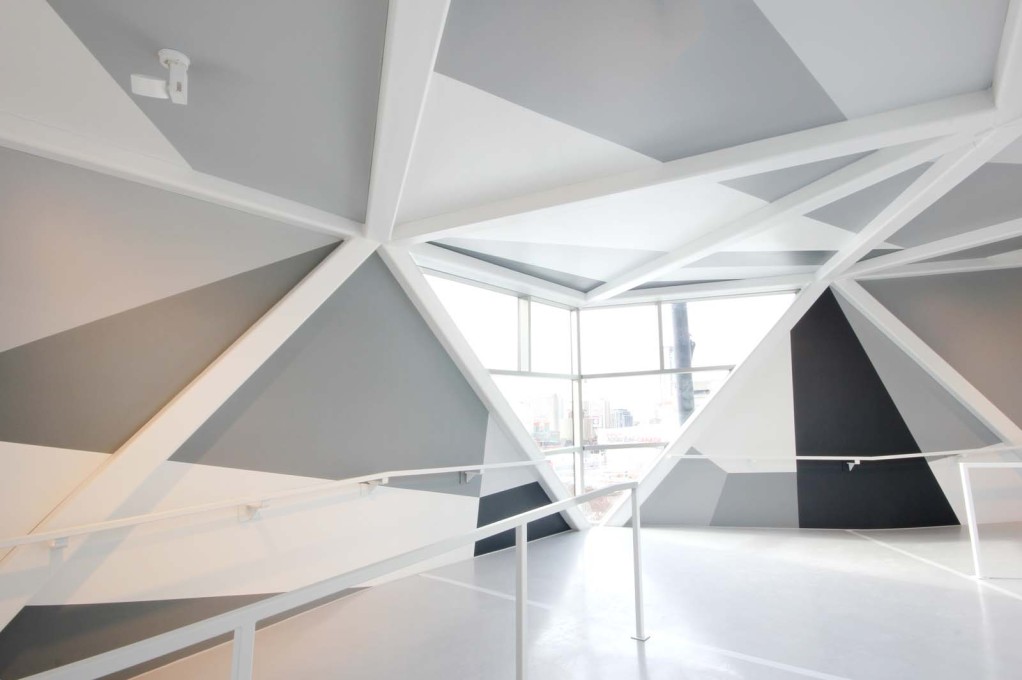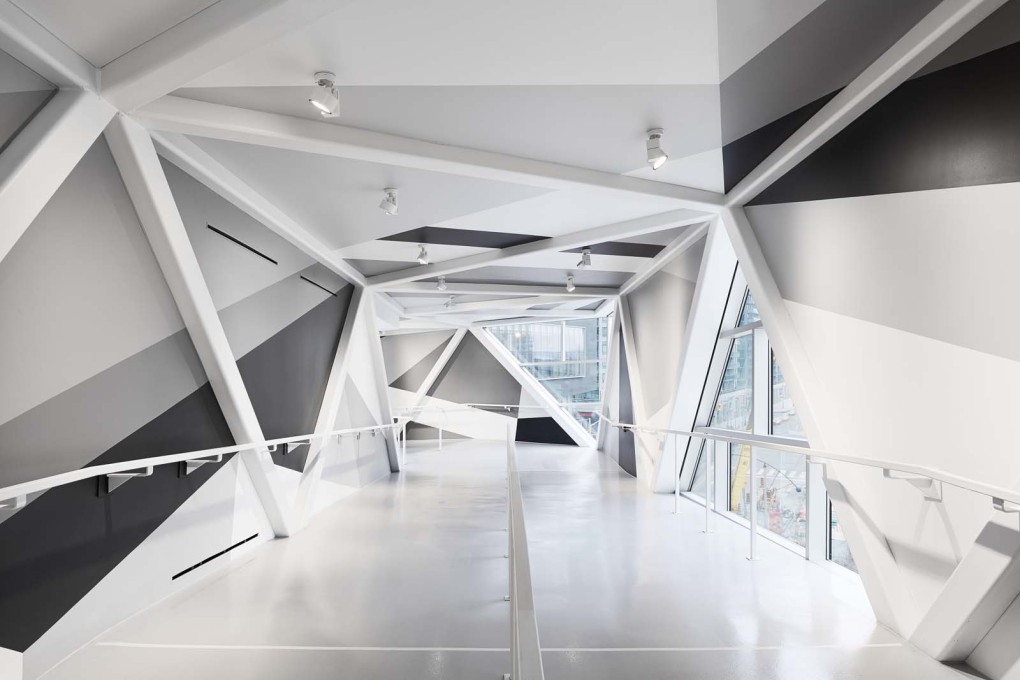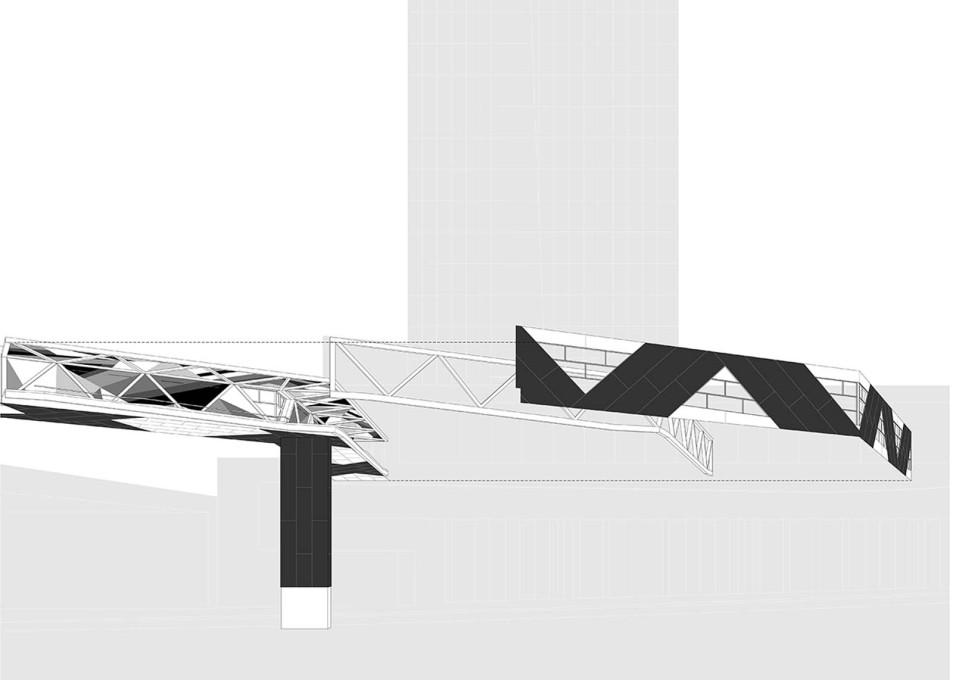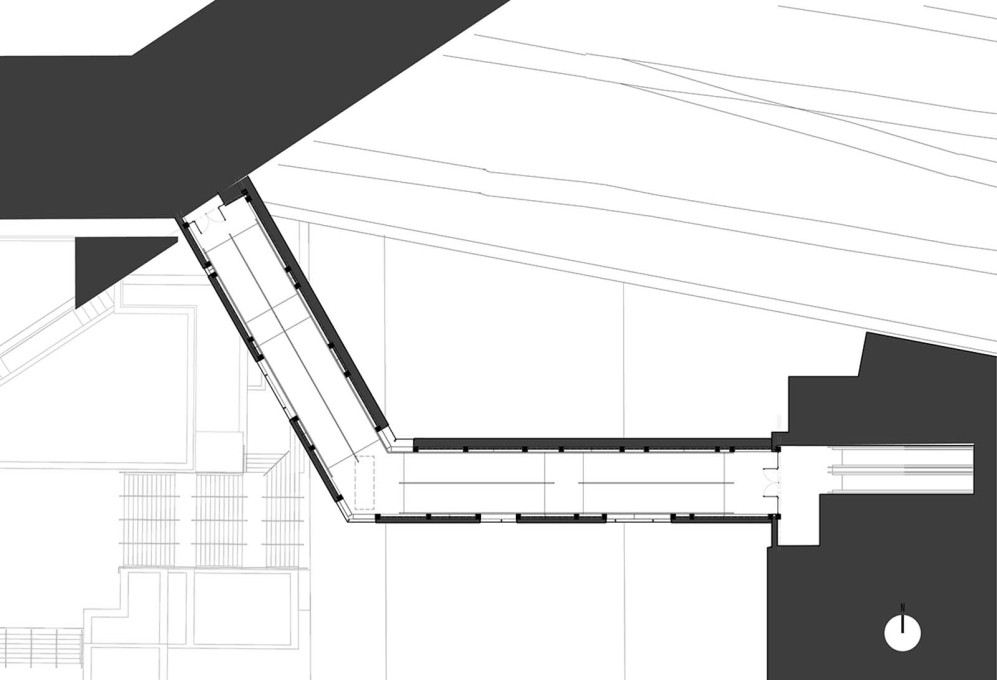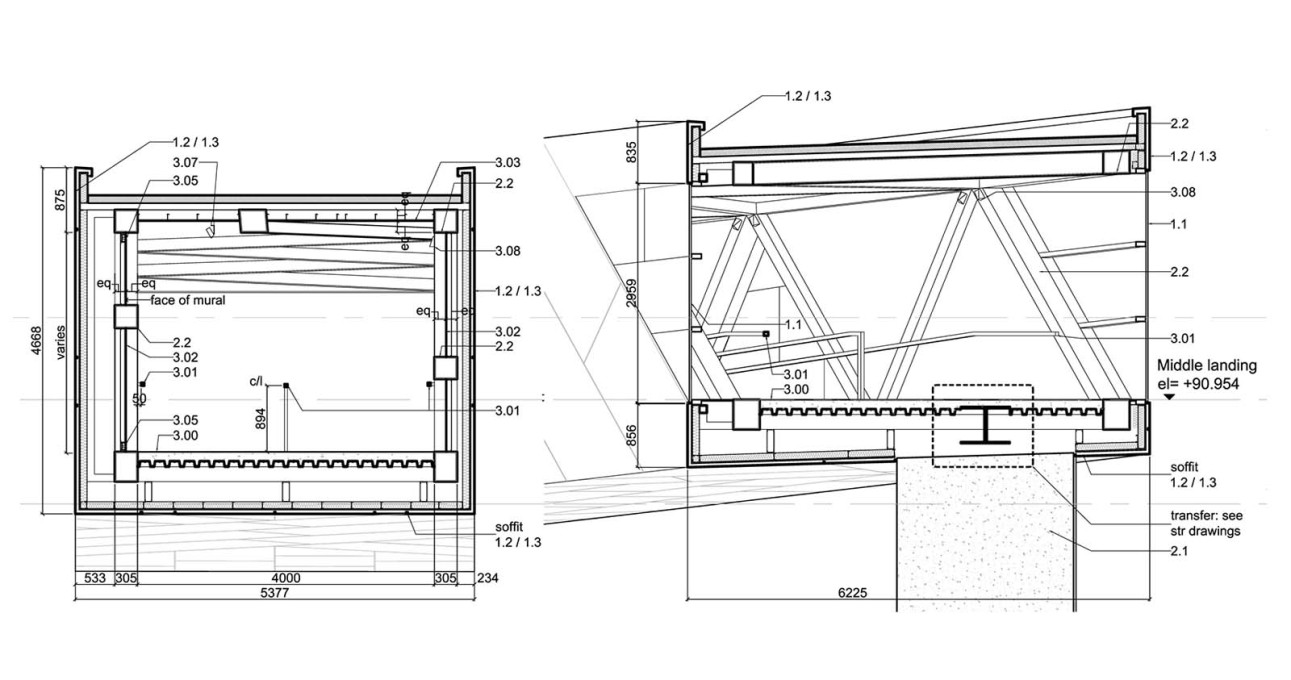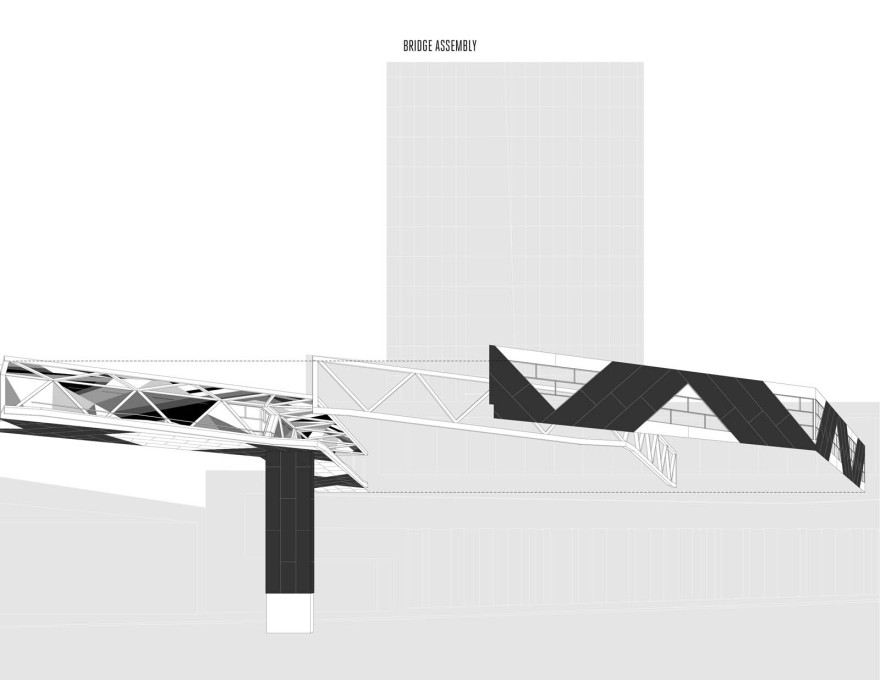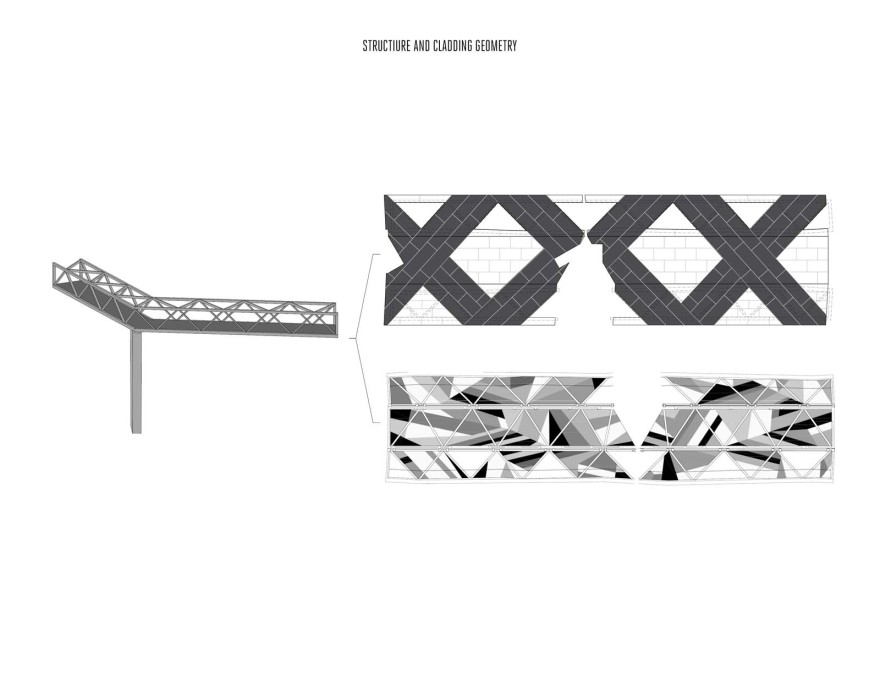uncube invited the Canadian philosopher of culture and politics Mark Kingwell to review a new bridge in his home city of Toronto. The SFC “Torque” Bridge, which joins a cluster of buildings in the Southern Financial Core, was designed by New York-based architect James Khamsi and Canadian public artists Jennifer Marman and Daniel Borins. Kingwell puts their collaborative creation firmly in context…
The rapidly expanding and proudly – even histrionically – multicultural Canadian city of Toronto, which I call home, suffers from a number of limitations on its aspirations. One, often lamented, is an insecurity rooted in wondering whether it truly is “world-class”, a self-defeating ambition that does not afflict more robust locations. Blame this on our proximity to the moronic inferno of American culture, and its habit of rendering the space north of the border as blank tundra, perhaps soon – if a reported 40 per cent of recently polled Americans have their way – to be demarcated by a Games of Thrones-style wall.
More tangibly, Toronto’s relative youth and largely unplanned expansion have confronted two geographical facts: large tracts of land to the north, west, and east, encouraging unbridled exurban sprawl; and a lakefront to the south which forces density down to its shores with a sort of gravitational intensity. The problem here is not just the hard line of the shore, but the fact that the city deliberately cut itself off from the natural frontage with elevated superhighways and a thick band of railway lines. The quite beautiful natural harbour can only be reached by braving some form of tunnel or bridge over this brutal tangle of concrete and steel.
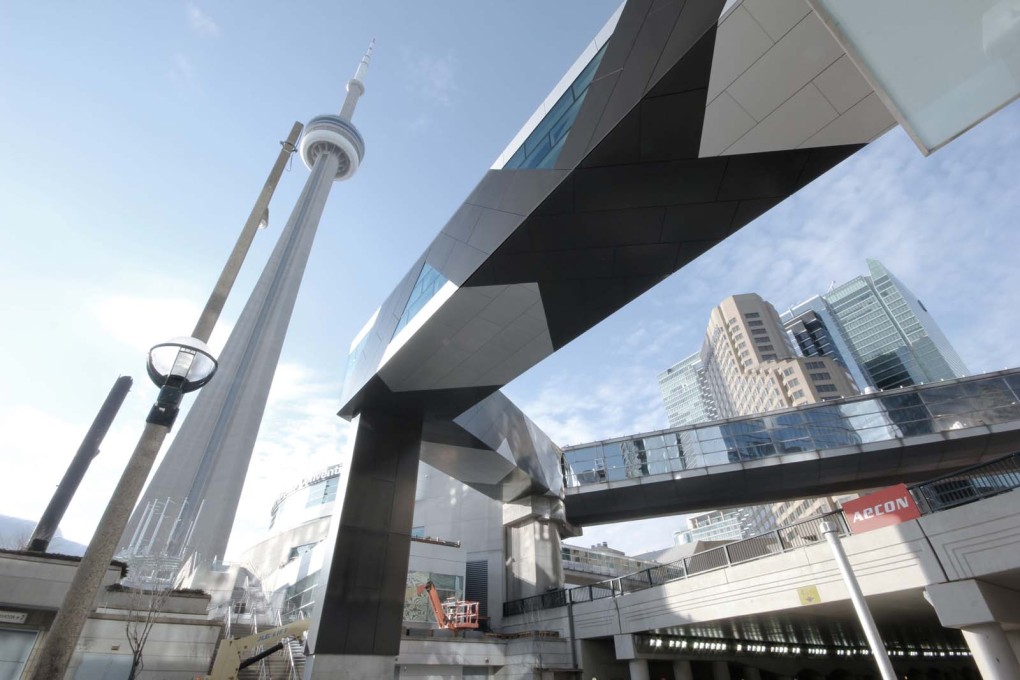
Enter, among other things, the PATH system, a series of linked walkways and elevated bridges that link the main downtown core, including business towers, hotels, and main railway station, with the pleasures of the shoreline. These include the natural amenities themselves, the yacht moorings and ferry-connected island in mid-harbour, but also a series of new or newish attractions: a baseball stadium, a hockey arena, an aquarium, a railway museum, and of course the towering, elegant concrete needle called the CN Tower, our city’s signature trope and Eiffel equivalent, available in picture-postcards, keychains, fridge magnets, snow globes, water bottles, pen-holders, decorative spoons, and 3D puzzle kits.
The SFC Bridge, otherwise known as “Torque”, is a small link in the PATH system. It joins a cluster of new buildings in the Southern Financial Core (SFC) with one of the big PATH arteries running from Union Station to the base of the CN Tower. Designed by New York architect James Khamsi, in collaboration with Toronto artists Daniel Borins and Jennifer Marman, Torque is also billed as part of the Toronto Public Art Project.
Judged just in itself, one might say that, as little bridges go, this is an interesting little bridge. Its undulating southward slope is arranged in a boxy tunnel, bent about halfway along its total length at an angle something over ninety degrees. Its painted walls are carved into jarring fractal shapes rendered in an elegant palette of whites and greys -- the closest visual equivalent might be the kind of camouflage designs used on First World War battleships. The exposed interior struts are arranged at fantastic angles, offering a crazy-quilt of structural beauty. Windows are sliced out of this pattern at irregular intervals, creating what the artists call “curated views” of the surrounding neighbourhood: the Tower, the lake, the streetscape.
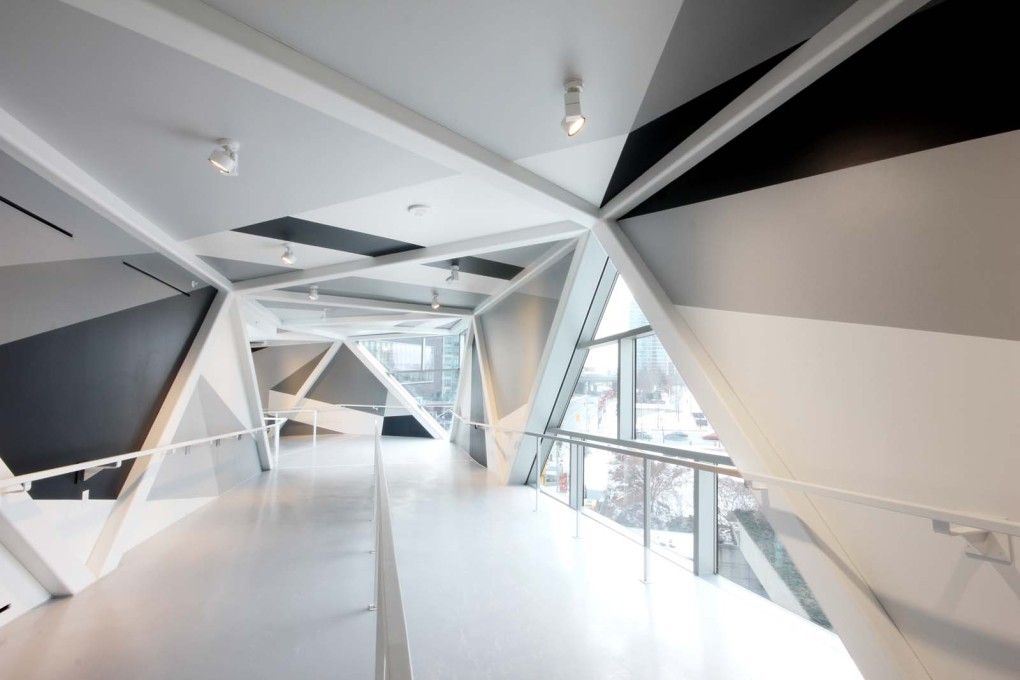
To my mind, the views are not so much curated as confused. But this is not the designers’ fault, because the city outside is still in flux. New condo towers are ever rising, old parking garages block the natural view of the lake, and the westward vista, toward the aquarium and baseball park, is a mass of concrete flats and ramps arranged at odd levels.
The bridge itself performs its function perfectly well, debouching walkers into the street-level Delta Hotel, but unfortunately in way that feels like they have snuck into the back entrance. Security doors block entrance to the lobby, so that one must first descend several escalators, pick a way through a dreary underground food court, and then enter the hotel by the car-friendly but pedestrian-hostile lobby. Patrons exiting the hotel have an easier time: they can go straight onto the bridge through the one-way security doors.
Coming into the bridge from the north side entails a more depressing journey, which involves time in the overheated main PATH walk, a dated and dirty passage. This is effected either from the railway station, through a series of confused way-finding challenges along the way, or from the baseball stadium to the west, which means a disorienting traverse of the HVAC platform at the foot of the CN Tower, its smooth vertiginous presence looming overhead all the while. Reaching Torque is a relief of sorts, but its short length means the feeling is no more than transient.
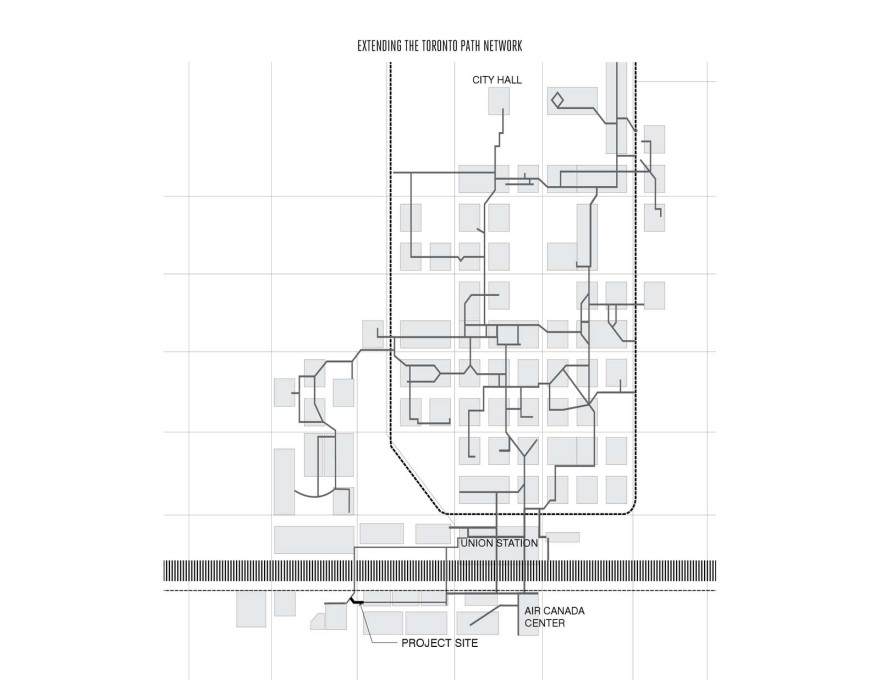
Borins and Marman are accomplished public artists; they have done witty and visually arresting pieces in the city. Khamsi is an architect of promise. The limited success of this project is, I think, more a function lack of space than lack of vision. Is it wrong that the best thing about a bridge might be the way it looks to someone not using it? Surely not, as the Brooklyn and Golden Gate, among many others, can attest. Torque’s best vantage is from the street out in front of the hotel. It hangs suspended there, unexpectedly high, a crooked elbow of black and silver, supported by one tough strut. A confident architectural gesture – but like many gestures, more suggestive than fully realised.
– Mark Kingwell is a Canadian philosopher and author specialising in theories of politics and culture. He is associate chair at the University of Toronto’s Department of Philosophy.
Further reading: Mark Kingwell also contributed an essay to uncube issue no. 32 Expotecture, The Future is Here about the 1967 Montreal Expo.




